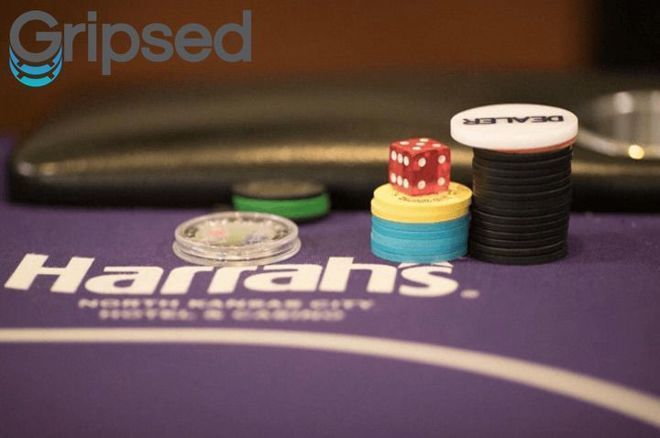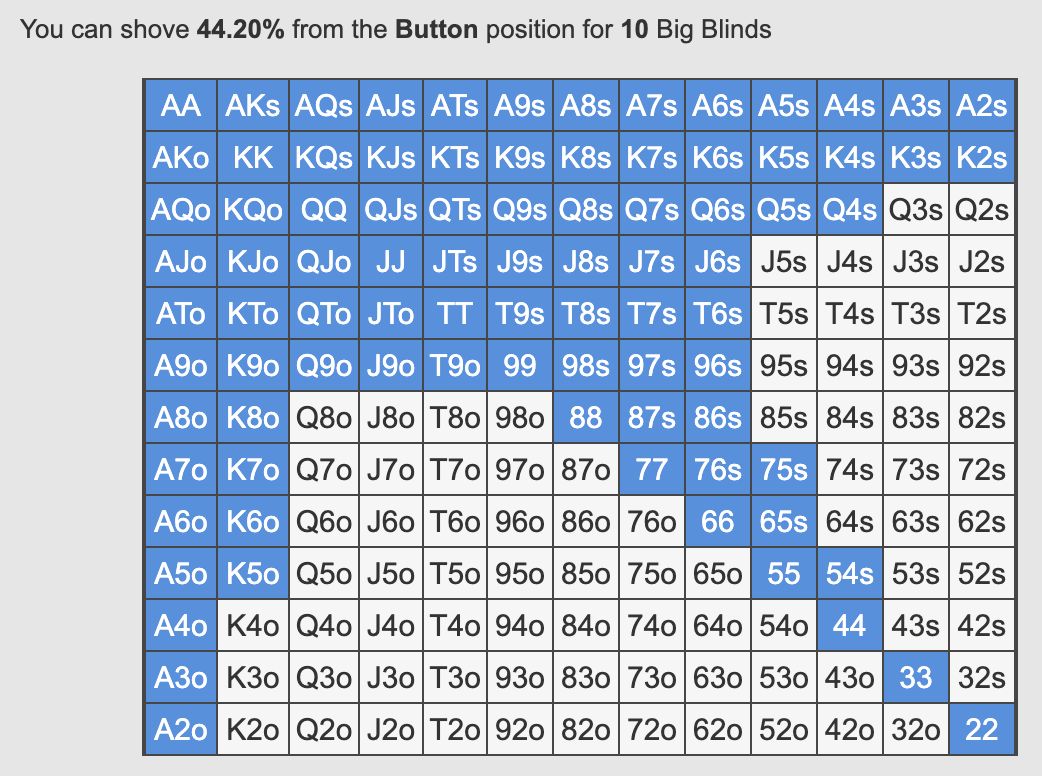Poker Strategy Deep Stack Tournament
- Poker Strategy Deep Stack Tournament Game
- Deep Stack Poker Tournament Strategy
- Poker Strategy Deep Stack Tournament Strategy
Although playing a poker tournament requires a much different strategy than cash games in general, the early stages of MTTs have many similar characteristics: the stacks are deep and there are no antes in play yet. Especially when deep stacked, cash game poker features subtle intricacies that just don’t come into play when you have only 20 big blinds or fewer. Whether you like six-max or nine-handed tables, you’ll find articles below to help you with your strategy. The deeper starting chip stacks and longer blind levels match cash table play very well. Cash game players usually play with around 100 big blinds, and tournaments usually involve playing with an average of 20 – 50 big blinds. Deepstack Tournaments are somewhat of a mix of cash and tournament poker, allowing for more ways to play.

Deep stack tournaments allow for the most actual play of all forms of poker, with the exception of no blind increase events. The entire premise of a deep stack tournament is for players to really let their skills do the talking and to eliminate as much luck as possible. Wiping out all luck is an impossible task when it comes to poker tournaments, but deep stack players are able to capitalize on the skill factor much more than regular tournament players.
With this advantage comes a noticeable tradeoff. Deep stack tournaments take a lot longer to complete than any other game. As a result of this increase in playing time, player stamina will be of the utmost importance. Stamina is always something that matters in poker, but it never matters more than when in an enduro tournament. This is one of the facets of play that a lot of players tend to completely discount. No one, even poker players, really considers poker to be a game where physical performance or condition actually matters.
The truth is, however, that it can be the difference between a solid play and a big slip up. There is a reason that savvy poker players try to target the guys who have been playing all night in a brick and mortar casino. The more tired you are, the more likely it is that you will donate some or all of your chips.
Deep stack play is all about picking your spots and taking your time. You are given a lot of chips so that you can pass up on your weak hands and get in the middle when you have something to actually work with. Luckily for you, this is a foreign concept to a lot of players. There will always be those players who think that a deep stack tournament is just like every other event, but the truth is that deep stacks are very different.
Try to spot the players who are playing way too fast and are clearly not in it for the long haul. Unless you are truly prepared for what’s in store, deep stack evens can be incredibly grueling and even quite boring.
Again, this is where endurance comes into play. If you can mentally outlast the players who don’t have the patience to play with restraint, you will find that a lot of pots fall right into your lap. Deep stack play is not about creating opportunities, but instead allowing the opportunities to fall into your lap. This is the exact opposite advice of what you would expect, but it is the absolute truth. The later stages of a deep stack tournament will call for more decisive action, but you won’t need to worry about that for awhile after the first hand is dealt.
Profiting from Passiveness

You just read about how a passive approach is the road to riches in deep stack tournament poker. So, how are you going to profit from the passiveness of other players? When the other players stay in slow mode, it will be your chance to crank up the aggression. The pitfall that many players fall into is misidentifying exactly when that stage of the game has arrived. You won’t be working with a short stack and big blinds for a long time, so don’t even worry about changing gears for at least a few hours (depending on the size of the field).
Eventually, though, you will start to run out of chips and it will be time to make moves. You can profit from this by putting the pressure on before your opponents have even considered possible adjustments to their strategy.
Small Edges and Consistent Play

Even the final tables of deep stacks will allow for a moderate amount of post flop play. Unless you have a fair amount of experience with this type of event, it will be awkward to try and play post flop poker with just a few players left. The natural inclination for a tournament player is to pick up the pace and push/fold when the final table is assembled. This will be necessary eventually , but it will be a detrimental strategy if you implement it too early.
The end goal in a deep stack is the same as in any type of tournament. You need to be able to make constant changes that will put you in a position to win. These changes will be much more mild in their implementation in a deep stack tournament, but they will exist nonetheless. You need to be able to do what everyone else is doing, but slightly better. This is why skills are so valuable and the entire basis of all success in deep stack play.
The last bunch of players will probably be very good at what they do, so your edge is not going to be significant. It is unusual for tournaments, but a deep stack is going to allow skill to prevail all the way to the end. If you don’t think you have the patience to sit and remain focused for hours on end, you will probably be better suited in a tournament with regular stack sizes. Deep stack tournaments are profitable, but only for a certain breed of players.
One of the regular struggles for tournament only players is how to navigate on deep stacks. The reason is quite simple… unlike their cash game brethren who tend to play a lot on deep stacks, tournament players just don’t get that much exposure to it. The stacks are typically only deep early in a tournament, with most middle and late stage situations involving medium or short stacks. So while tournament only players may get plenty of practice with push/fold strategies or decisions that end either preflop or on the flop, they sometimes struggle when money is really deep.

In this article, we are going to address preflop strategy adjustments for early stage/deep stack play, and in my next article we will address post flop considerations.
Let’s use with the following scenario, which was recently posted in a public forum:
Poker Strategy Deep Stack Tournament Game
I really would love your opinion on this whether my move was a bad beat or a bad decision:
Early in a 2.6k$ buy-in 1M$GTD tournament (250 big blinds deep). I Opened 2.2BB with QQ from UTG, folded around to the button. Got 3-bet 10BB from the button. I made it 30BB. He made it 80BB. I jammed. He snap called with AK then he flopped the K and got me busted. Did I make a huge mistake considering 250BB? Should I have folded to 5-bet? Is my move profitable in long run?
Okay, so let’s break this hand down at each action point.
Deep Stack Poker Tournament Strategy
“I Opened 2.2BB with QQ from UTG”, certainly we are opening QQ from any position, but 2.2BB is way, way too small. This is a typical sizing for MTT players that is quite effective in shallower stack situations. When the effective stack is 25bb’s, 2.2 puts adequate pressure on opponents (it’s 8.8% of the effective stack) while leaving you some room to maneuver. On super deep stacks, however, like this tournament, not only does it not put any pressure at all on players, it actually invites them to take a shot at you very liberally because it’s less than 0.9% of their stack. They are investing 2.2 big blinds, with a potential windfall of 248 more on the offering. It’s no wonder players will call this open (correctly) with all kinds of marginal, speculative hands. With this depth of money opening for 5-6BB is more appropriate, it builds the pot with your stronger hands and charges people a more reasonable (for us) risk/reward ratio for getting involved with us. 2.2x is just giving players a dirt cheap shot at us with massive implied odds.

“Got 3-bet 10BB from the button.” This is a nice sizing. The “standard” advice you hear is to 3-bet to 3 times the amount of the open raise, which in this case would be to 6.6BB. While that advice is a reasonable starting point, it’s important to adjust up or down from there for reasons that make sense. In this case, because we are super deep stacked and the initial raise is way too small, an upward adjustment is ideal. I think we could reasonably go as high as 12-15BB’s in this spot, but 10 is certainly a lot better and more appropriate than 6.6 would be, or the common tournament player’s small sizing to something like 5.1.
“I made it 30BB”. A common starting point for 4B sizing is more like 2.2x the 3-bet size, or 22BB to go. Given the depth of money and playing out of position should this go post flop, sizing up a bit from 22 makes some sense. That being said, when we are super deep stacked it’s important to think ahead, about how we will respond if re-raised. Let’s continue, since that’s exactly what happened.
“He made it 80BB. I jammed. He snap called with AK then he flopped the K and got me busted. Did I make a huge mistake considering 250BB? Should I have folded to 5-bet? Is my move profitable in long run?” So our hero responded to the 80BB 5bet by shoving all in for 250BB’s. There is really only one hand that is truly worth this much preflop because it’s the preflop nuts. And when you are playing on super deep stacks, you should generally only be looking to get all the money in with the nuts, or really close to it. KK is really close to it preflop, and yet against many players getting it all in with KK here would be a mistake as they will only join you in the middle with the one hand beating you. Getting all in preflop with QQ for a 500BB pot on level 1 of a super deep stacked event is not a good strategy at all as you will be up against KK or AA most of the time when the opponent goes along with you. Try not to get confused by the fact that the opponent in this handmade an even bigger mistake and stacked off AK in the same situation. Both players handled the preflop action very poorly for this depth of money.
The poster then in a results-oriented fashion (because he lost the hand) asks if he should have folded to the 5-bet. The relevant point here is that you want to be asking yourself this question before making the 4-bet to 30bb’s. How will I respond to a 5-bet? If the answer is easy fold, or easy continue, then have at it. But if the answer is I don’t know what I’ll do, that will be a sick spot and I’ll want to throw up… then choose a different course of action. Raise smaller to make folding more acceptable. Raise larger to encourage your commitment to the hand. Or, as the hero probably should have done here… don’t raise. Given the depth of money, I think calling the button’s 3-bet is best. The giant 4-bet will only tend to fold out any 3-bet bluffs (which we are crushing) and get continued action from a strong range.
To answer his question directly, yes he probably should fold to the 5-bet to 80bb. 4-bet/folding preflop with a hand as strong as QQ, not a desirable outcome. Had the hero flatted the 3B, he would have likely called once on the king-high flop, then folded to further action, costing himself around 20BB or so. And moved on with 230BB, more than most other tournaments even start with. Additionally, he keeps his opponent’s range as wide as possible, keeps the pot smaller playing from out of position, and has some real disguised strength working in his favor as well.
Poker Strategy Deep Stack Tournament Strategy
When you’re playing tournaments, instead of just making bets and raises in robotic fashion, think about the depth of money and what you’re hoping to accomplish, and size accordingly. Also think ahead, have a plan for your hand and how it may play out, which will lead you to make decisions proactively rather than reactively.